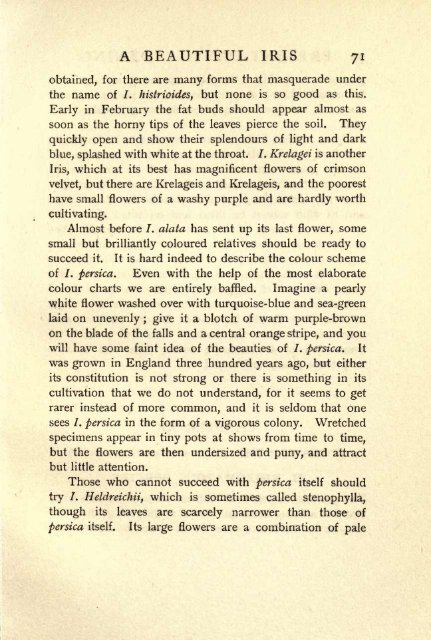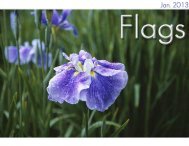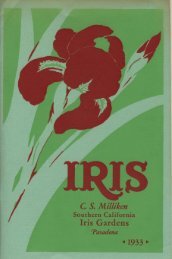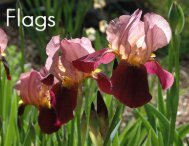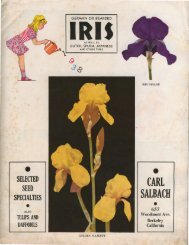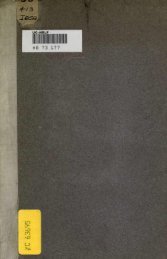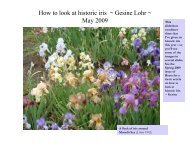Irises - Historic Iris Preservation Society
Irises - Historic Iris Preservation Society
Irises - Historic Iris Preservation Society
You also want an ePaper? Increase the reach of your titles
YUMPU automatically turns print PDFs into web optimized ePapers that Google loves.
A BEAUTIFUL IRIS 71<br />
obtained, for there are many forms that masquerade under<br />
the name of /. histrioides, but none is so good as this.<br />
Early in February the fat buds should appear almost as<br />
soon as the horny tips of the leaves pierce the soil. They<br />
quickly open and show their splendours of light<br />
and dark<br />
blue, splashed with white at the throat. /. Krelagei is another<br />
<strong>Iris</strong>, which at its best has magnificent flowers of crimson<br />
velvet, but there are Krelageis and Krelageis, and the poorest<br />
have small flowers of a washy purple and are hardly worth<br />
cultivating.<br />
Almost before /. alata has sent up its last flower, some<br />
small but brilliantly coloured relatives should be ready to<br />
succeed it.<br />
It is hard indeed to describe the colour scheme<br />
of /. persica. Even with the help of the most elaborate<br />
colour charts we are entirely baffled. Imagine a pearly<br />
white flower washed over with turquoise-blue and sea-green<br />
laid on unevenly ; give it a blotch of warm purple-brown<br />
on the blade of the falls and a central orange stripe, and you<br />
will have some faint idea of the beauties of I. persica. It<br />
was grown in England three hundred years ago,<br />
its constitution is not strong or there is<br />
something<br />
but either<br />
in its<br />
cultivation that we do not understand, for it seems to get<br />
rarer instead of more common, and it is seldom that one<br />
sees /. persica in the form of a vigorous colony. Wretched<br />
specimens appear in tiny pots at shows from time to time,<br />
but the flowers are then undersized and puny, and attract<br />
but little attention.<br />
Those who cannot succeed with persica itself should<br />
try I. Heldreichii, which is sometimes called stenophylla,<br />
though its leaves are scarcely narrower than those of<br />
persica itself. Its large flowers are a combination of pale


